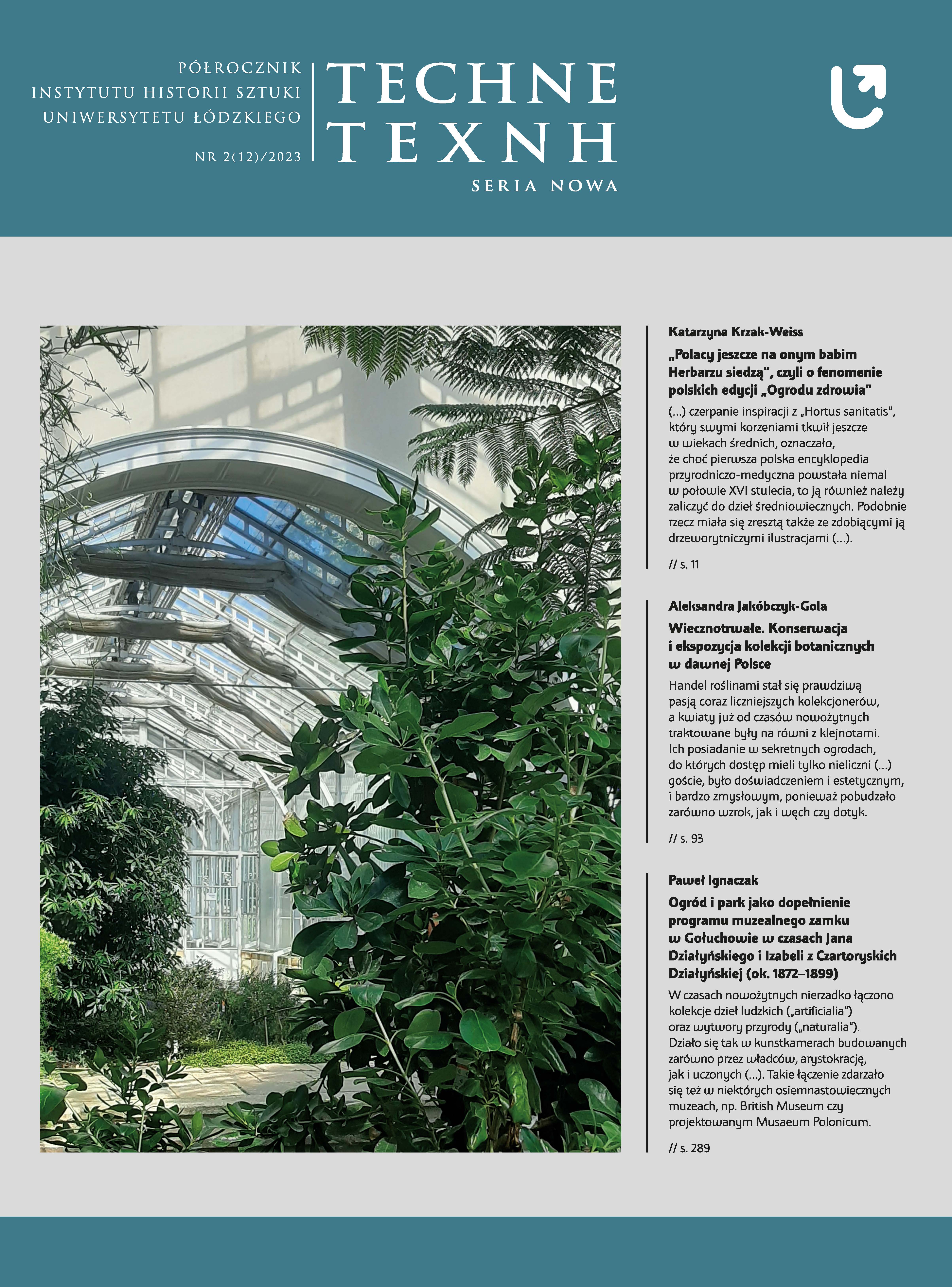Wiecznotrwałe. Konserwacja i ekspozycja kolekcji botanicznych w dawnej Polsce
Everlasting. Conservation and exhibition of botanical collections in ancient Poland
Author(s): Aleksandra Jakóbczyk-GolaSubject(s): History, Essay|Book Review |Scientific Life, History of ideas, Special Historiographies:
Published by: Wydawnictwo Uniwersytetu Łódzkiego
Keywords: plants; collection; modern era; botany
Summary/Abstract: The aim of the article is to present various techniques of plant conservation and preparation, especially in the period until the end of the 18th century. It shows the museum aspect of botanical collections. However, the most important issue is the transformation of natural artifacts into cultural exhibits. On the example of old Polish collections, especially those gathered by Anna Wazówna, Anna Jabłonowska, the Breyn family, Teodor Klein, Jerzy Andrzej Helwing, but also based on European achievements and traditions – especially Italian (Luca Ghini, Gherardo Cibo, Ulisses Aldrovandi) and German, the article presents techniques that have been developed to prepare selected plants or botanical elements to become part of the collection.The article briefly presents all stages of the process – from collecting using appropriate equipment and under appropriate weather conditions, through appropriately selected conservation methods, description, and ending with the exhibition of objects. The history of techniques for preserving botanical exhibits was discussed in relation to selected sources – from drying (and its various varieties related to, e.g. the need to preserve color or appropriate spatial shape, or the decorative skeletal technique), through storage in spirit solutions, soaking in glycerin, to freeze-drying or covering plants with epoxy resin – modern preparation techniques that pursue similar goals to those known already in the 15th or 17th century. Therefore, the article also includes references to the latest research on the conservation of plants and biological exhibits.The text is based on Old Polish sources – especially the works of Jan Krzysztof Kluk, whose writings contain quite detailed information on the presentation of preparation techniques and plant exhibits in the nature study. The basic source is also a French publication in the field of botany, written by the practitioner and creator of plant collection objects – Jean Pitton de Tournefourt. Examples include material sources preserved to this day – for example the oldest herbariums of the hortus siccus type, culturally connected with the Polish-Lithuanian Commonwealth.Another issue related to the preparation of collection objects is the awareness of their subsequent use and exhibition. Various presentation techniques were also shown here – from living botanical gardens, in which plants were planted in symmetrical arrangements with descriptions in the form of technical, botanical signatures, through herbariums in the form of codes, showcases, drawers, to loose boards serving as scientific and educational aids. The basis for the analysis of this problem are images showing old collections – especially those depicting cabinets of curiosities, such as the Ferrante Imperato collection.
Journal: TECHNE. Seria Nowa
- Issue Year: 2/2023
- Issue No: 12
- Page Range: 93-114
- Page Count: 22
- Language: Polish

